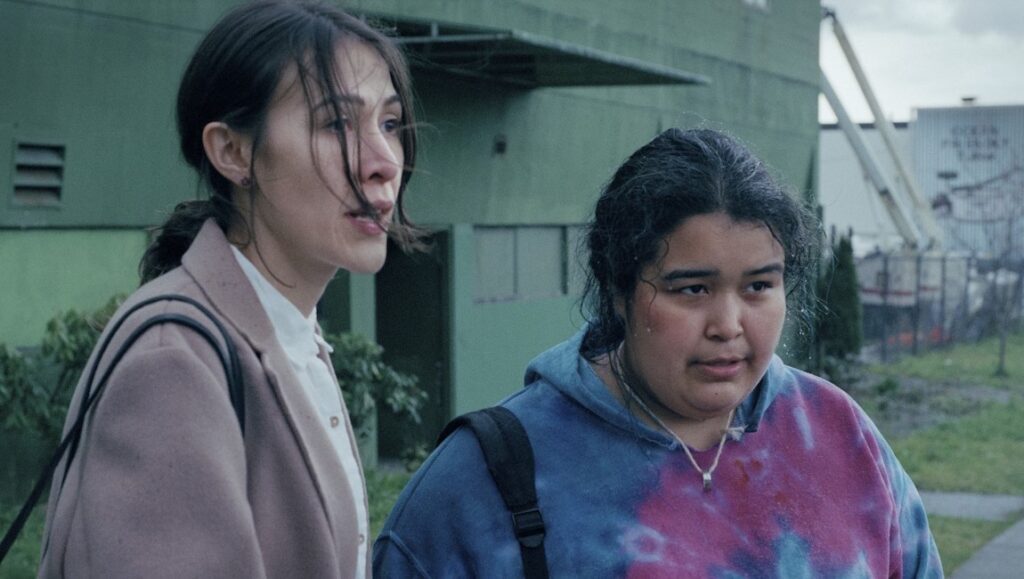The Body Remembers When the World Broke Open is a less garish film than its prolix title would suggest: instead, co-directors Elle-Máijá Tailfeathers and Kathleen Hepburn have actually delivered a determined study in interruption, understated but never relaxed. The film traces a single day’s intersection in the lives of two First Nations women, Áila (also Tailfeathers), a young professional who’s disinterested in motherhood and riddled with anxiety, and Rosie (newcomer Violet Nelson), an even younger woman, of lesser economic means, who’s pregnant and deeply entangled in an abusive relationship. When Áila finds Rosie shoeless and crying, standing in the rain while her boyfriend threateningly hollers and approaches from across the street, she whisks Rosie away to the haven of her middle-class apartment. From here, The Body… delicately explores the psychology of these two women, both individually and as colliding atoms, their disparate understandings of womanhood resulting in a marathon conversation, often suspended by lulls of tension and doubt, its rhythms echoing the approximate strain or security of any given moment.
The strength of the interplay between these two women is made even more impressive through the film’s formal approach: after brief introductory scenes for both characters, The Body… proceeds in the manner of a simulated, unbroken tracking shot (with impressively executed hidden cuts), the camera patient and investigative, digressing with one character here and another there, but always emotionally close. Of the two actresses, it’s Nelson’s presence which is most crucial to this film’s success: her non-professional acting allows for many moving transitions between expressions of bravado and woundedness — and her best moment comes when Áila is briefly absent from the screen entirely. With the camera trained on her face, moments after placing Joni Mitchell’s Blue on the victrola and queuing up “Little Green,” Nelson manages to wordlessly convey a history of pain – not specifically just that of women, or of First Nations peoples, or of the working class victims of wealth culture, but implicitly all of those, and untold other shades of hurt. The Body… suggests that life rarely offers easy answers — and, so, appropriately, the film offers few of its own. And while that does not make for the most complex message, nor the boldest film, it still succeeds as an elegant study in the symbiotic sensations of pain and hope.
Published as part of November 2019’s Before We Vanish.


Comments are closed.